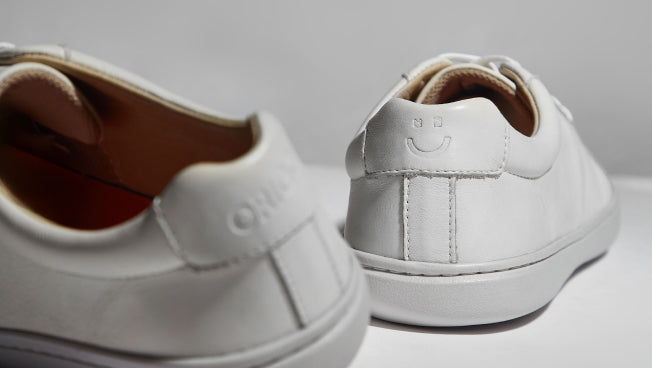
In the face of climate change, worsening pollution and overloaded landfills, making conscious purchasing decisions has become even more important.
Fast fashion, a recent development in the fashion industry, is causing significant harm to the environment, animals and humans. While clothing produced by fast fashion brands often makes the news for clogging landfills, shoes are also a problem.
Fast fashion footwear is typically poorly made by exploited workers, often using synthetic, toxin-laden materials. So, while the low cost of shoes from fast fashion brands is appealing to some, at the end of the day, the world pays a much higher price.
Fortunately, there is another much better option for eco-conscious shoppers: sustainable leather. Before we address the question, “what is sustainable leather,” it helps to know a bit more about how conventional leather is made.
Conventional Leather: Is It Sustainable?
The type of natural leather most commonly used to make uppers and soles of shoes comes from cows. Leather manufacturing helps prevent millions of hides from being sent to landfills or burned, which is why many consider leather manufacturing a form of recycling. So, while the process of getting raw materials to make leather is not animal-friendly, it can be considered sustainable.
However, in the past, leather had a negative reputation among eco-conscious consumers. This was because, up until recently, most leather manufacturers used toxic dyes, heavy metals and other harmful substances in the tanning process. These include chromium, a heavy metal that can cause respiratory issues, congenital disabilities and tumors in people and animals.
Tanning is the process that turns raw cowhide into leather and is a step that cannot be skipped. Otherwise, the hide will rot.
Can Leather Be Sustainable?
Leather can be made in ways that are not harmful to the planet and humans. The following are some examples:
- Vegetable Tanning: This is the oldest method of tanning leather. Instead of synthetics, tannins derived from plants are used to turn cowhide into leather.
- Chrome-Free Tanning: As its name suggests, this method uses tannins that do not contain chromium, which significantly lessens its environmental impact.
- Free of Metal (FOM) Tanning: Leather marked as FOM has been tanned without the use of aluminum, titanium, iron or other heavy metals.
- Probiotic Tanning: This uses nature-derived biochemicals made through fermentation.
One way to know if a pair of leather shoes is sustainable is to check the maker’s certifications. For instance, a certificate from the Leather Working Group signifies that the leather manufacturer or tannery has committed to its standards for sustainability and ethical labor practices.
Is Vegan Leather More Sustainable?
If you’re wondering, “are vegan shoes more sustainable than leather,” the answer is: it depends. For instance, “vegan” leather made from polyurethane (PU) and polyvinyl Chloride (PVC) is not sustainable. Both PU and PVC are plastics derived from fossil fuels.
Far from being more sustainable, vegan leather made from PU and PVC leather is harmful to the environment. Indirectly, they cause disease in humans as well as kill fish and wildlife. In addition, the manufacturing process results in greenhouse gas emissions. The additives used in their manufacture include neurotoxins and carcinogens, such as mercury and asbestos, which often end up in waterways.
Also, PU and PVC do not last as long as real leather. Both are susceptible to peeling and cracking. Unlike real leather, which is breathable and molds to the shape of the feet over time, PU and PVC leathers are rigid and trap heat.
What Is Sustainable Leather Made From Plants?
Thankfully, sustainable vegan leathers are becoming more widely available. These include leathers made from pineapple, cork, mushrooms, grains and cacti.
In particular, cactus leather is a much better alternative to conventionally tanned leather and PU and PVC faux leather. Making it requires fewer resources, and cactus farms serve as natural carbon sinks. Apart from being more sustainable, vegan leather made from cacti looks like real leather and is more than durable enough for footwear.
Footwear made from cactus leather is flexible, lightweight, and easy to clean. The material can withstand up to 10 years of regular use, after which it begins to biodegrade. Simply put, these vegan shoes are more sustainable than leather, whether PU, PVC or conventionally treated.
Fashionable Footwear Made With Sustainability In Mind
Shoes made from cactus leather and naturally leather-tanned using eco-friendly methods are stylish footwear options for those who value sustainability.
At Origo Shoes, we understand that there is no perfectly sustainable material, and every type of leather has some form of environmental impact. To guide our customers, we provide information on our products and the materials they’re made from so our customers can choose the ones that are right for them.
Read our story to learn more about our commitment to sustainability and transparency.






